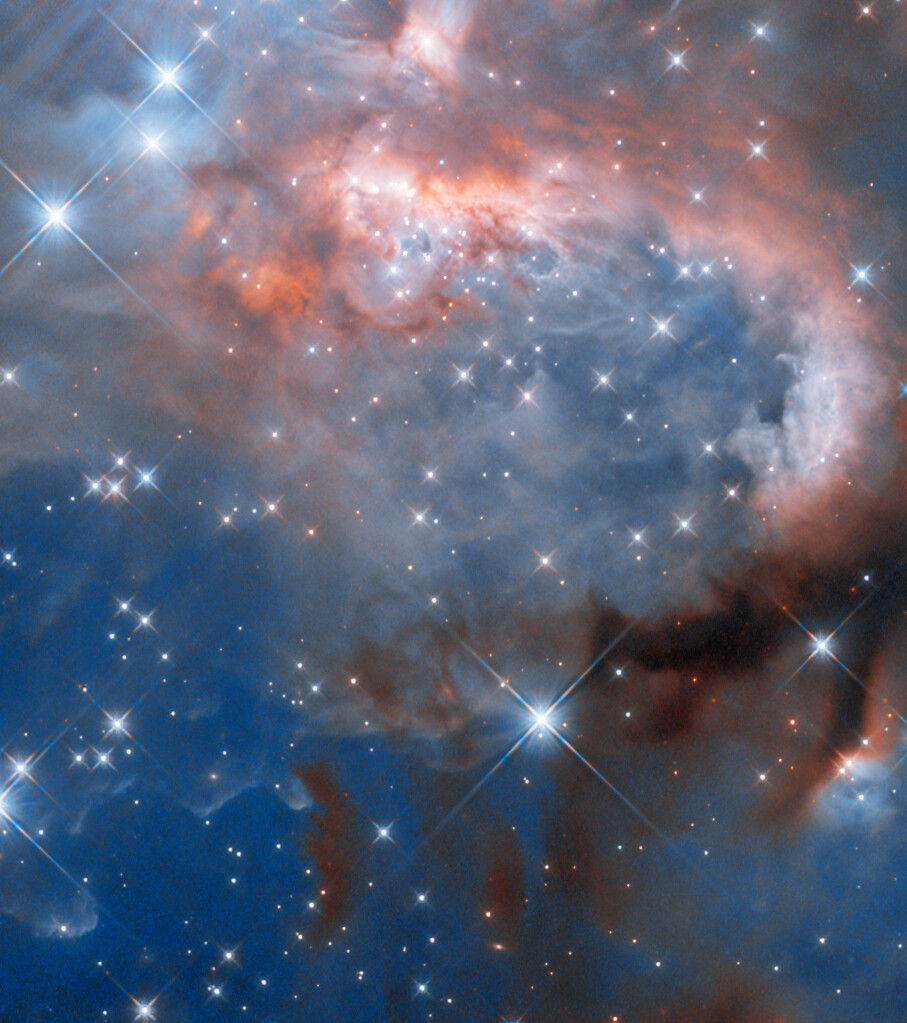INSUBCONTINENT EXCLUSIVE:
Named RCW 7, the nebula is located just over 5300 light-years from Earth in the constellation Puppis
Nebulae are areas of space that are rich in the raw material needed to form new stars
Under the influence of gravity, parts of these molecular clouds collapse until they coalesce into protostars, surrounded by spinning discs
In the case of RCW 7, the protostars forming here are particularly massive, giving off strongly ionising radiation and fierce stellar winds
that have transformed it into what is known as a H II region
The ultraviolet radiation from the massive protostars excites the hydrogen, causing it to emit light and giving this nebula its soft pinkish
Here Hubble is studying a particular massive protostellar binary named IRAS 07299-1651, still in its glowing cocoon of gas in the curling
clouds towards the top of the nebula
To expose this star and its siblings, this image was captured using the Wide Field Camera 3 in near-infrared light
The massive protostars here are brightest in ultraviolet light, but they emit plenty of infrared light which can pass through much of the
gas and dust around them and be seen by Hubble.Image Credit: ESA/Hubble - NASA, J

